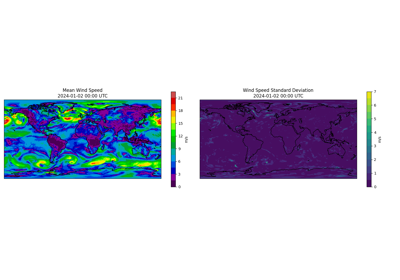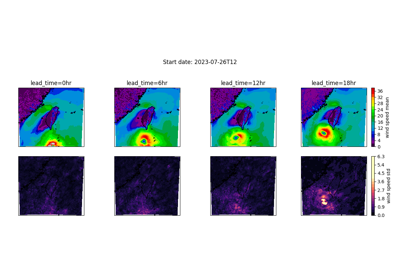earth2studio.perturbation.HemisphericCentredBredVector#
- class earth2studio.perturbation.HemisphericCentredBredVector(model, data, seeding_perturbation_method, noise_amplitude=0.35, integration_steps=3)[source]#
Bred Vector perturbation method, following the approach introduced in ‘Huge Ensembles Part I: Design of Ensemble Weather Forecasts using Spherical Fourier Neural Operators’. The vector is bred by advancing in time. The bred vector is scaled seperately in the northern and southern extra-tropics and interpolated in the tropics. Additionally, it applies a centred perturbation, ie generating two perturbed stated by adding and subtracting the bred vector, respecitvely.
- Parameters:
model (PrognosticModel) – Dynamical model, typically this is the prognostic AI model
data (DataSource) – data source for obtaining warmup time steps
seeding_perturbation_method (Perturbation, optional) – Method to seed the Bred Vector perturbation that will be applied to the initial input of the model.
noise_amplitude (float | Tensor, optional) – Noise amplitude, by default 0.05. If a tensor, this must be broadcastable with the input data
integration_steps (int, optional) – Number of integration steps to use in forward call, by default 3
Note
For additional information:
- __call__(x, coords)[source]#
Apply perturbation method
- Parameters:
x (torch.Tensor) – Input tensor intended to apply perturbation on, not used in this perturbation method
coords (CoordSystem) – Ordered dict representing coordinate system that describes the tensor. Must contain coordinates (Any, “time”, “lead_time”, “variable”, “lat”, “lon”). Time and lead_time must have size 1.
- Returns:
Output tensor and respective coordinate system dictionary
- Return type:
tuple[torch.Tensor, CoordSystem]



